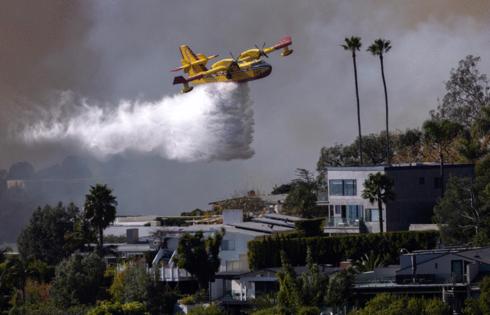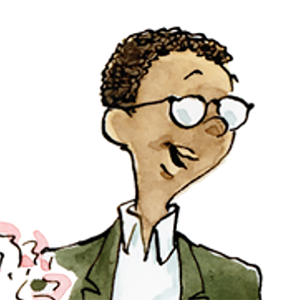Uber driver accused of intentionally starting fire that destroyed Pacific Palisades
Published in News & Features
LOS ANGELES — The most destructive inferno in Los Angeles history, which charred a devastating path through Pacific Palisades and Malibu in early January, was a rekindling fire that an Uber driver intentionally set days earlier near a popular hiking area, federal investigators alleged.
Authorities on Wednesday also announced the arrest of 29-year-old Jonathan Rinderknecht, who is suspected of setting the initial fire on New Year’s Eve. Rinderknecht, of Florida, was charged with starting what eventually became the Palisades fire. Among the evidence that was collected from his digital devices was an image he generated on ChatGPT depicting a burning city, said U.S. Attorney Bill Essayli.
“While we cannot undo the damage and destruction that was done, we hope his arrest and the charges against him bring some measure of justice to the victims of this horrific tragedy,” Essayli said.
The finding affirms a long suspected theory and comes after a nine-month probe into the cause of the Palisades fire, which charred 23,400 acres and leveled more than 6,800 structures, including many homes in Pacific Palisades and Malibu. Twelve people died in the fire.
The first fire, called the Lachman fire, was reported about 12:17 a.m. on New Year’s Day in the hillside above Pacific Palisades by a resident whose home is about two blocks from the popular Skull Rock trail. Some residents say they saw fireworks in the area on Jan. 1, but authorities said they don’t believe fireworks were involved in the start. Authorities did not provide specifics about how the fire started, saying only that it was ignited by an open flame.
Essayli said Rinderknecht drove Pacific Palisades after working the evening shift as an Uber driver. Two of his passengers told law enforcement that he appeared agitated and angry that night. Rinderknecht — who once lived in the neighborhood — drove toward Skull Rock Trailhead, parked his car and attempted to contact a former friend.
He used his iPhone to take videos at the area known as the Hidden Buddha clearing and listened to a French rap song “Un Zder, Un The,” whose music video shows a trash can being lit on fire, prosecutors said. The theme of the song is one of despair and bitterness, prosecutors wrote in the criminal complaint, and Rinderknecht had listened to it nine times in the four days before he allegedly set the fire.
In the five minutes after he allegedly set the fire, prosecutors said Rinderknecht called 911 several times, but didn’t get through because he didn’t have cell service in the area. When he finally reached 911, he was at the bottom of the hiking trail and reported the fire. By that time, a resident had already reported the blaze.
While on the phone with 911, Rinderknecht allegedly typed a question into ChatGPT: “Are you at fault if a fire is lift because of your cigarettes,” according to the criminal complaint.
Rinderknecht then got into his car and drove away from the fire, passing by fire engines screaming through the neighborhood. He later told investigators he turned around and offered to help firefighters fight the blaze, according to the complaint.
While the suspect was arrested in Florida, authorities said he lived in Southern California at the time and had a friend who lives in the area around where the fire started. He moved to Florida after the fire and made “false statements” to authorities, prosecutors said.
Water-dropping helicopters initially were not able to fly that night because of the wind, according to the agency, but around 1:40 a.m. they began launching an aerial attack with support crews on the ground. News footage captured the charge, with walls of flames towering over homes and firefighters with hoses running into backyards.
Shortly after 3:30 a.m., Los Angeles Fire Department officials reported they had stopped forward progress of the blaze.
A little over an hour later, LAFD reported that firefighters had “completed the hose line around the perimeter of the fire and it is fully contained.” However, some firefighters remained at the site to mop up and ensure the fire didn’t flare up again.
The announcement is likely to place more scrutiny on Los Angeles fire officials for their handling of the 8-acre fire on New Year’s Eve and prompts questions about why they were not able to extinguish the blaze before hurricane force winds blew into the area.
LAFD officials declined to detail whether they conducted thermal imaging of the area in the aftermath. Agencies frequently use thermal imaging during large wildfires to find hot spots during periods when there is no visible light or in conditions with heavy smog or mist.
“More than 9 months ago, our city faced one of the most devastating periods our region had ever seen. Lives were tragically lost. Thousands of homes were destroyed. Our heroic firefighters fought the blaze valiantly with no rest. Each day that families are displaced is a day too long and as we are working tirelessly to bring Angelenos home, we are also working towards closure and towards justice — and today is a step forward in that process,” L.A. Mayor Karen Bass said in a statement.
One reason some experts believed the January fire was a rekindle: The second fire erupted in the same general area.
University of California, San Diego cameras that monitor the mountains and hills, including Pacific Palisades, captured the Jan. 1 blaze. The Los Angeles Times reviewed available footage over the next six days, and no new smoke was visible. But at about 10:30 a.m. on Jan. 7, new smoke was seen in the same area.
By midmorning, firefighters were back at the same Palisades hillside amid hurricane-force winds fighting what would become a much larger inferno: the Palisades fire.
A Los Angeles firefighter who was among the first on the scene acknowledged over the radio that they were going “back up to where the Lachman fire was.”
Fire experts say it’s possible for a blaze to rekindle days and even months in some environments after an initial fire is thought to be extinguished, though it’s not typical. Embers can get buried in tree roots or underbrush covered by heavy ash and then later be freed by strong winds.
Some other destructive fires in recent decades have also been restarts of older fires.
The immense Oakland Hills fire in 1991, which destroyed 2,500 structures, exploded after firefighters believed they contained an earlier six-acre fire the day before. Firefighters left equipment at the scene but did not continuously monitor it. Winds picked up, and the conflagration consumed homes.
The Maui fire, the deadliest in in the U.S. in more than a century, killed at least 101 people and also ignited from an earlier brush fire caused by downed power lines that firefighters believed they had snuffed.
©2025 Los Angeles Times. Visit at latimes.com. Distributed by Tribune Content Agency, LLC.







Comments